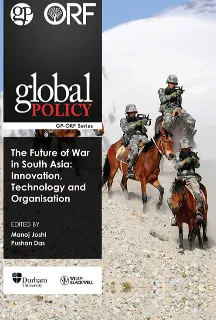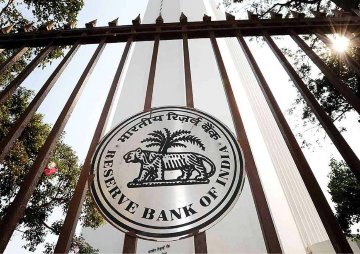Introduction: Military Transformation and the China Challenge
Indian and Chinese forces engaged in a primeval brawl in the summer of 2020 in the Galwan Valley, with the two sides using stones and nail-studded clubs, but no firearms[1]. This clash claimed the lives of at least 20 Indian soldiers and four People’s Liberation Army (PLA) personnel. While the Indian commander was killed, his Chinese counterpart got away with serious injuries. It was the most serious incident on the India-China border since 1975.
The leveraging of loopholes in the traditional notions of warfare to limit the potential of escalation to conventional conflict is reflective of the Chinese strategy of relying on coercion and the manipulation of risk to achieve its territorial objectives[2]. The Chinese model falls into what can be referred to as Gray Zone activities where it preys upon ambiguities in international law.
With the adoption of rapidly evolving development—and in some cases, regression—of advanced warfighting technologies, the face of warfare is changing. Last year, a US Congressional Research Service note on Emerging Military Technologies listed an overview of selected emerging military technologies in the US, China and Russia, such as lethal autonomous systems, artificial intelligence (AI), hypersonic weapons, directed energy weapons, biotechnology and quantum technology[3]. As the report recounts, the face of warfare is changing with the rapidly evolving development of advanced warfighting technologies. Understanding the adoption of these technologies and the strategies to employ them will be key to countering the kinetic and geographic components of China’s growing capabilities.
The security competition with China is unique and unprecedented in its complexity. The strategic challenge from China spans locales and domains. It surrounds India geographically and involves all instruments of national power. And China’s recent military reforms lend it not only greater capabilities, but the command arrangements to deploy them jointly.
The PLA is undergoing far reaching reforms that have changed its organisational structures and is seeing an increasing integration of improved military equipment, targeting the goal of generating a ‘world-class’ military force by 2049. Terms like mechanisation, informatisation and, more recently, intelligentisation in Chinese military literature reflect some of Beijing’s efforts in introducing networked platforms, sensors and weapons that can support not only better and more integrated command-and-control systems but potentially also over-the-horizon targeting at extended ranges[4].
The degree to which the integration of informationised capabilities, such as big data and AI, will influence China’s approach to future warfare is unclear as its peer adversaries are adopting similar technologies. However, Maj. Gen. PK Mallick (retd.) has pointed out that India’s capability to decrypt high grade cipher is non-existent, and it has an ambiguous command and control setup for cyber security operations.
In the future, the amount of data available for use will increase substantially, and how this data will be stored and processed will be a key war winning factor. Militaries will need to be equipped to sift through and analyse terabytes of information, and this is not something humans do naturally[5]. Thus, while the prospects of additional data can enhance military intelligence and operations, the inability to process an over-abundance of data will be a problem. To analyse important state capability in cyberspace, we have developed a taxonomy that focuses on enablers, including indicators of capability from the civilian sector and the armed forces.
Apart from the organisational and doctrinal shifts in the PLA, the 1 October 2019 parade marking the 70th anniversary of the founding of the People’s Republic was indicative of the advances in China’s defence modernisation. Of note was China’s new air systems that were displayed during the parade—the WZ-8 highspeed reconnaissance unmanned aerial vehicles and unmanned combat air vehicle[6]. The first operational Chengdu J-20A fighter/ground-attack aircraft PLA Air Force (PLAAF) unit was formed in 2019, and production of the type is likely to increase over the next few years as more units are re-equipped with it. At the same time, the Shenyang J-31 multi-role combat-aircraft project continues, but at a slower pace than that of the J-20A. Justin Bronk writes that the PLAAF, and possibly the PLA Naval Air Force, will begin to field several operational unmanned combat aerial vehicle designs with significant degrees of lethal automation and broadband stealth for strike, intelligence surveillance and reconnaissance and potentially offensive counter-air operations in highly contested airspace.
In January 2020, China commissioned the first of eight Type-055s, currently under construction or already complete. The Type-055 includes several features that illustrate the progress being made by Chinese shipbuilders in incorporating complex technologies onto ships with the introduction of new capabilities in the form of an integrated mast, large-diameter vertical launching system cells, and its power generation capacity[7]. Beyond the Type-055, China’s output of surface combatants remains striking, with the 19th and 20th Type 052D (Luyang III-class) destroyers launched in May 2019 and a 63rd Type-056/056A (Jiangdao I/II-class) corvette later in August 2019[8].
Malcom Davis’s chapter in the volume outlines the need for the Indian and Australian navies to have a forward presence and sufficient combat mass to counterbalance and deter the PLA Navy. There is a case to invest more in advanced autonomous systems on and under the waves, and in the air, to combat the mass being generated by China. Autonomous systems have inherent advantages in terms of lower acquisition and sustainment cost, reduced risk absent a crew, and the potential benefits of exploiting rapid innovation cycles.
The process of re-equipping the PLA Army continues, with a focus on the objectives of completing basic mechanisation and improving informatisation. Legacy equipment, such as the ZTZ-59 tank and PL-59 howitzer, is now being cycled out of frontline units, although it is unlikely that all of these weapons systems would have been replaced. The PLA Army is also dabbling in unmanned ground vehicles. It has been testing the “Desert Wolf” series of unmanned ground vehicles, which run on caterpillar tracks and are equipped with remotely controlled weapon stations[9]. Maj. Gen. BS Dhanoa’s (retd.) chapter on autonomous ground systems lays out the unique challenges such ground systems are likely to face in their adoption by India and in many ways other countries.
The PLA is a beneficiary of the “whole of the system” approach promoted by the civil-military fusion strategy being pushed by the Chinese leadership. At the heart of this is the understanding that technological innovation and innovative approaches in defence policy is the route towards creating a war-winning military. For the PLA, the key to victory in a conventional war lies in the dominance of space, cyberspace and the electromagnetic domains. The creation of a Strategic Support Force in December 2015 was aimed at providing the PLA with the capacity of undertaking integrated joint operations and fighting and winning informationised, if not intelligentised, wars of the future.
Even when the Indian defence establishment recognises the need to counter PLA modernisation and adopt the operational concepts such as “informationised warfare”, there exists a broader ambivalence regarding force integration among the three Indian services. Minus this integration, it is simply not possible to develop operational concepts that can enable effective combat in the cyber, electromagnetic and space domains. There is little evidence to suggest that any of the three services have adopted a capability-based approach versus the previous threat-based one. The character of war is changing—with less distinction between ground-air-sea forces, less distinction between close and deep areas, and less distinction between peace and war. Rajeswari Pillai Rajagopalan’s chapter is an attention call to Beijing’s increasing competencies in space and counterspace capabilities, the way it has undertaken the institutional reorganisation to strengthen the role of these capabilities, and the likely national security consequences for the region.
India’s current defence spending priorities are, however, heavily weighted towards traditional means of war-fighting and conventional modes of deterrence[10]. Current postures favour large-scale conflict in the form of a “two-front war”, but India has an almost negligible forward presence, limited lower end and versatile assets, and a lack of strategically mobile forces and limited capabilities to meet asymmetric threats which use a combination of defence and commercial technology. The recent conflict over Nagorno-Karabakh was a ‘drone’s eye view’ on challenge of disruptive and accessible technology[11]. Kabir Taneja writes that there is a need for the Indian military to consider the threats posed by these disruptive capabilities in the hands of non-state actors and an urgent need to develop counter measures.
The Indian military thus needs to better invest in a diverse range of dynamic forces and assets to effectively counter adversary challenges along the full spectrum of conflict, particularly in those contests that may occur below its conventional strategic thresholds. Effective deployment, both in terms of speed and distance, is probably the greatest contemporary challenge facing the Indian military. Given the difference in the size of their economies and the head-start that China has in military modernisation, playing catch-up will be difficult, if not impossible. But smaller militaries have prevailed over larger and better equipped ones by using asymmetrical strategies. But to develop them, India needs to first have a better grasp of its current predicament.
The aim of this edited volume is to establish India’s defence technology goals and strategies needed to achieve them. How can the Indian Armed Forces adapt legacy platforms and doctrines to counter emerging military technologies of the future? By identifying and highlighting the gap between the existing capabilities and the requirements of the future, the volume hopes to initiate a conversation to understand these changes with an outlook to 2030.
Endnotes
[1] Michael Peck, “China May Be Arming Its Soldiers With Medieval Halberds To Fight India,” Forbes, September 09, 2020.
[2] Harsh V. Pant and Pushan Das, “China’s Military Rise and the Indian Challenge,” ORF, April 19, 2018.
[3] Kelley M. Sayler, Defense Primer: Emerging Technologies, p. 3
[4] “Chapter One: Defence and Military Analysis,” The Military Balance 120, no.1 (January 1, 2020), pp. 9–20.
[5] “Using Big Data in Military Operations: This Is How Future Wars Will Be Fought,” Analytics India Magazine (blog), October 03, 2015.
[6] “More Than Missiles: China Previews Its New Way of War,” Center for Strategic & International Studies, October 16, 2019.
[7] “The US Navy’s Large Surface Combatant Programme: A Project in Search of a Clear Rationale,” RUSI, January 28, 2021.
[8] “Chapter Six: Asia,” The Military Balance 120, no. 1 (January 1, 2020), pp.220–323.
[9] “China’s Latest Unmanned Combat Systems to Enter Service, Aim to Win Future Wars for PLA: reports,” Global Times, November 12, 2020.
[10] Pushan Das and Sushant Singh, “Today’s capabilities, tomorrow’s conflicts,” ORF, February 22, 2017.
[11] Robyn Dixon, “Azerbaijan’s Drones Owned the Battlefield in Nagorno-Karabakh — and Showed Future of Warfare,” The Washington Post, November 12, 2020.
Contents
Introduction: Military Transformation and the China Challenge
Pushan Das and Manoj Joshi
Robots at War: The Future for Autonomous Systems at Sea in the Indo-Pacific
Malcolm Davis
Integrating Unmanned Platforms and Enabling Tech in India’s Warfighting Doctrine
BS Dhanoa
Future of Autonomous Air Platforms in the Indo-Pacific
Justin Bronk
ASATs: A Growing Response to PLA Space Capabilities
Rajeswari Pillai Rajagopalan
China’s Military Technology Developments and What This Means for India
Manoj Joshi
The PLA’s Cyber Warfare Capabilities and India’s Options
PK Mallick
Asymmetric Warfare, Technology and Non-State Actors: What India Must Do
Kabir Taneja
The views expressed above belong to the author(s). ORF research and analyses now available on Telegram! Click here to access our curated content — blogs, longforms and interviews.

 PDF Download
PDF Download



 PREV
PREV



